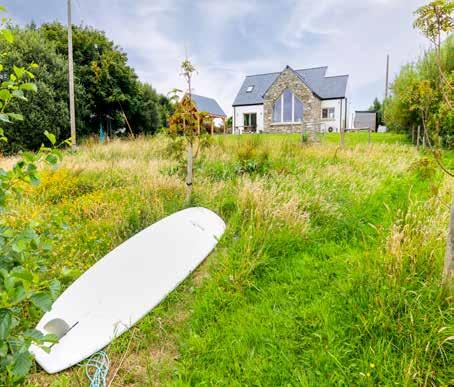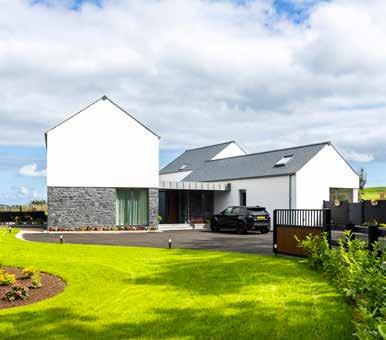Selfbuild
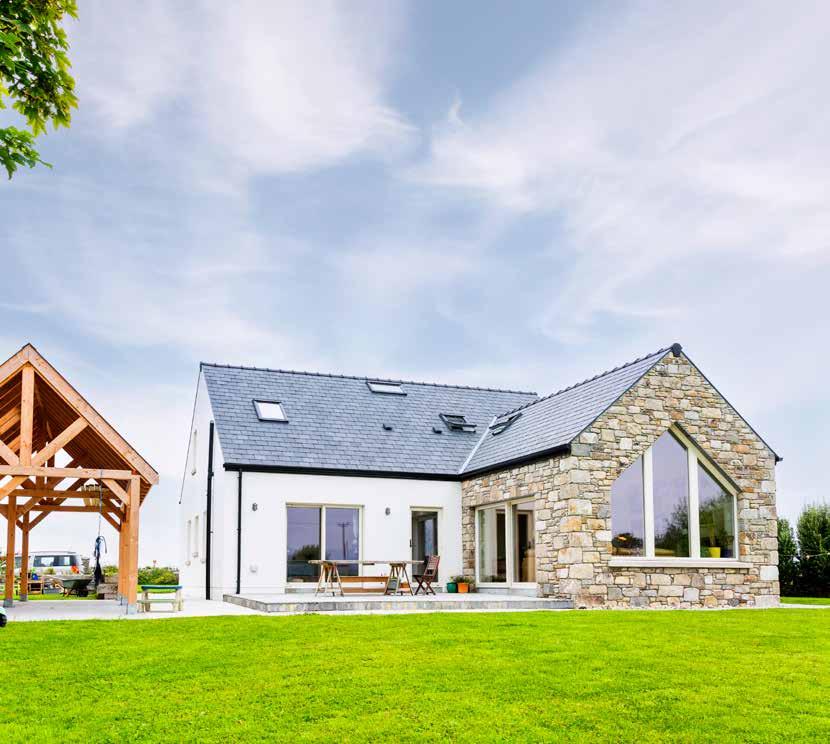


Whether you are upgrading an existing property or building new, the addition of an insulated thermal lining to the inside of a wall, roof slope or ceiling will dramatically improve the energy efficiency standards in your home.
Why choose Unilin Thermal Liners?
Optimum performance from a thinner board
Cost-effective
External wall appearance maintained
Easy to install
Readily available from your local builders merchant
For expert advice, contact our technical team on 046 906 6050 or discover the range below:
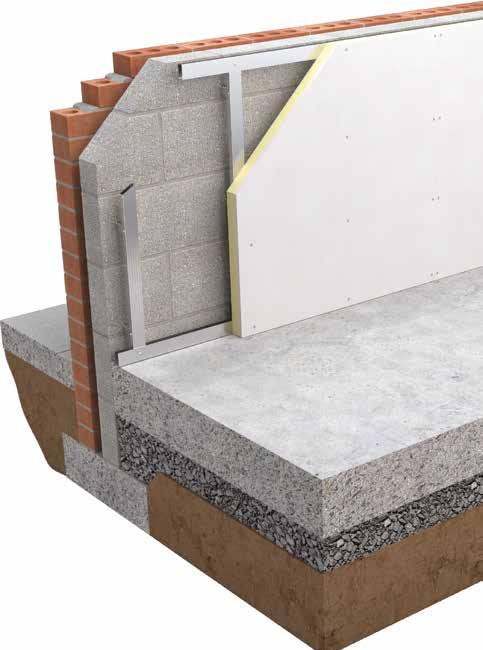
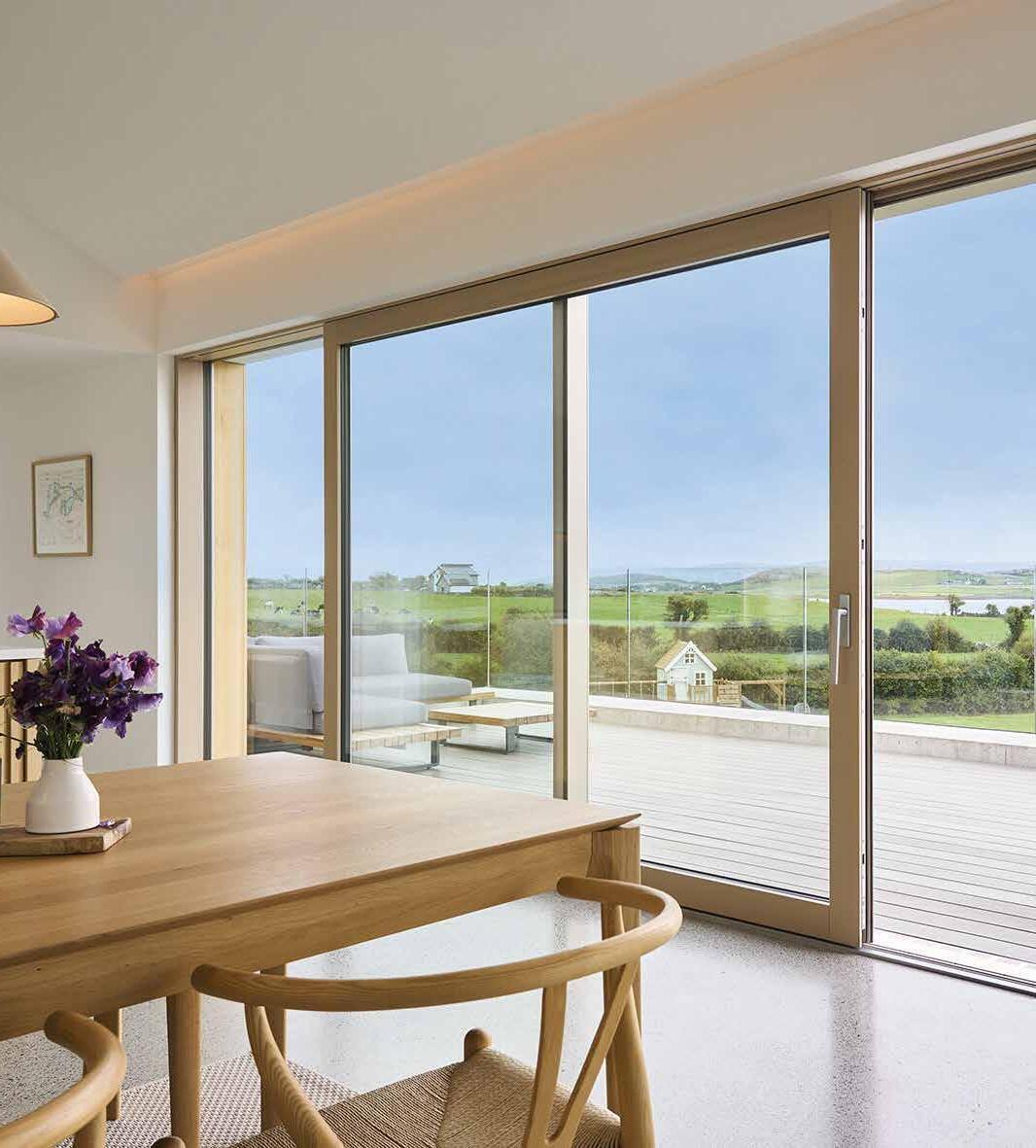
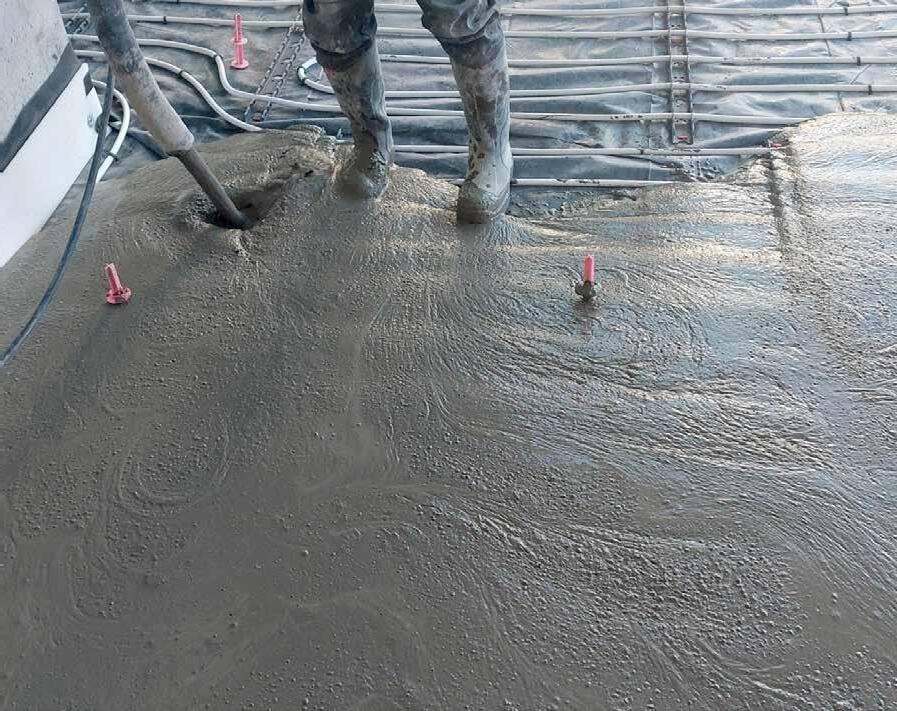
Roadstone FlowPlus is the next generation self-levelling cementitious screed developed in conjunction with the ARDEX Group.
Roadstone FlowPlus is the next generation self-levelling cementitious screed developed in conjunction with the ARDEX Group.
• Provides a quick, smooth and level surface with minimal leveling
• Ease and speed of installation
• Provides a quick, smooth and level surface with minimal leveling
• Suitable for all domestic and commercial applications
• Ease and speed of installation
• Suitable for all domestic and commercial applications


“It’s a waste of time and money to get planning permission for a house you can’t afford...”
We can all agree money worries are zero fun.
So if you’re building new or renovating, the first step is to make sure the design you’re looking at submitting for planning permission gets looked over by someone like a quantity surveyor.
It’s a waste of time, energy and money to get planning permission for a house you can’t afford to build or extend.
The budget health check at the sketch drawing stage will be able to tell you if your plans are overbudget or if you’re in the ballpark. Remember, at this stage we’re not talking itemised costings, it’s just a review of the general ideas your architectural designer presents to you and what cost range they fall into.
Once you’ve passed the budget check, it’s time to proceed with the design that works for you and finalise it. Get it checked again and if it needs further work to make it fall within a cost range you’re happy with, so be it. This is time well spent.
With the design finalised, you can ask a quantity surveyor to go into more detail for the costings so you know what to expect once

you secure planning permission. After you get the green light from your local authority, you’ll be going out in the real world for current costings.
The good news is, once the price of everything has been set down and the parameters clearly set out, you can get on with the fun part. Building or renovating the home of your dreams.
Yes, it’s expensive to build new or renovate, but it’s worth bearing in mind that the most common budget busters have to do with the finishes and what you really need to focus on is the building fabric. Kitchens, bathrooms and all the rest can be upgraded in time. Furniture, light fixtures and fittings, down to upgrading the wall plates, can be done up room by room. As with any successful project, the key is in doing your research.
Happy building!

Astrid Madsen - Editor astrid.madsen@selfbuild.ie

Build Cost Special 97
How much does it cost to build in Ireland today? Find out from the experts and learn from our Selfbuild Cost Survey 2025.

If you have a question, want to share some insights, or simply let us know how you’re getting on with your project, we’d love to hear from you for our Letters page. Email us at letters@selfbuild.ie
26 From surf spot to family home
This hands-on build used reclaimed materials and local craft to create an energy efficient home that feels rooted in its coastal Donegal surroundings.
36 The inclusive house
A family home in Co Derry built to meet complex care needs, while still being beautiful, comfortable and practical for everyday life.
46 The right fit
A costed Dublin City extension and renovation project with design flair and bags of personality.
56 Flexible living
All articles equally cover the 32 counties; when we refer to the Republic of Ireland the abbreviation is ROI. For Northern Ireland it’s NI.
A 1920s Belfast home gets a complete overhaul to suit family life now, and in the years to come.
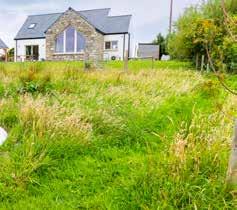
66 The fast-track home
Why a young couple chose to go down the route of a modular concrete build in Co Carlow.
72 Countryside garden design
This contemporary home in Co Galway needed a garden design solution that would get it to blend into the landscape.
76 Letters
Should you turn off the heat pump and MVHR in summer?
78 Build now or wait?
With costs stabilising, is it a good idea to wait until prices go down even further?
80 ICF versus masonry: which is better?
Comparing the pros and cons for each, from costs to environmental credentials.
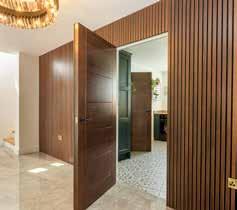
82 Downsides to smart homes
We’re all tech savvy these days, but do our homes really need to keep up with the trend?
86 Cavity wall insulation methods
Is it better to insulate with boards or beads? What are the watchpoints and which is better?
88 Vacant property grant: factsheet
The ins and outs of applying for the €70k grant in ROI, including exact grant amounts for each type of work.
90 How to navigate the vacant property grant
Watchpoints and insider tips from someone who’s been there, done that.
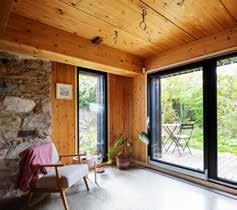

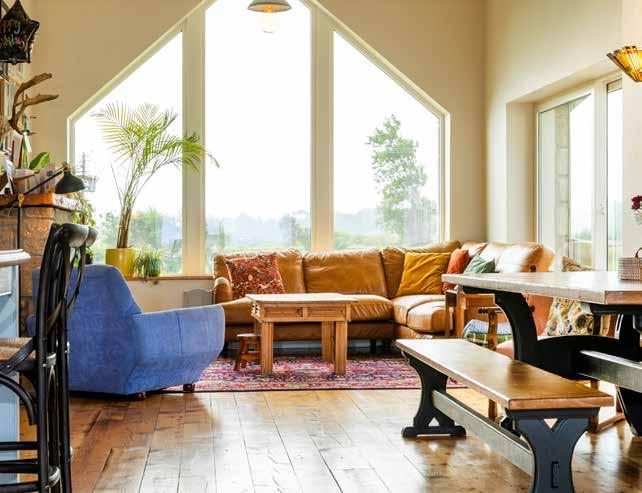
97 Cost landscape
What is the cost picture in Ireland today? We open our build cost special with an expert analysis of what the future holds.
98 Preliminary costs
You’ll be spending thousands before you even put a spade in the ground. We look at where the money disappears to.
100 Foundations costs
How much and what’s involved?
102 Wall costs
What are the main cost parameters and what are they coming in at?
103 Floor costs
Upper storey floors can stack up; here’s what to expect cost wise today.
104 Roofing costs
Materials, construction type and insulation all contribute to the final bill.
106 New build costs overview
We chat to quantity surveyors to get to grips with where costs stand today.

108 Itemised costings
How much you can expect to spend on windows, mechanical, electrical, fitout and other costs.
110 Extension cost examples
Two properties in Dublin shared how much they spent on the various elements of their extension and renovation projects.
113 Selfbuild cost survey
Our survey results are in for 2025; we compare them to the 2023 survey including what pitfalls to avoid.
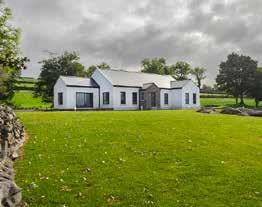
CONTACT
info@selfbuild.ie
EDITOR
Astrid Madsen astrid.madsen@selfbuild.ie
DEPUTY EDITOR
Heather Campbell heather.campbell@selfbuild.ie
DESIGN
Myles McCann myles.mccann@selfbuild.ie
Shannon Quinn shannon.quinn@selfbuild.ie
Megan Buckley megan.buckley@selfbuild.ie
MARKETING Calum Lennon calum.lennon@selfbuild.ie
Rebecca Ferris rebecca.ferris@selfbuild.ie
Erin Mason erin.mason@selfbuild.ie
Rachel Caughers rachel.caughers@selfbuild.ie
SUBSCRIPTIONS
Becca Haslett becca.haslett@selfbuild.ie
ADVERTISING SALES
Emma Phillips emma.phillips@selfbuild.ie
Joanna McConvey joanna.mcconvey@selfbuild.ie
Lisa Killen lisa.killen@selfbuild.ie
Maria Toland maria.toland@selfbuild.ie
Nicola Delacour-Dunne nicola.delacour@selfbuild.ie
ACCOUNTS
Karen McLeigh karen.mcleigh@selfbuild.ie
Leanne Rodgers leanne.rodgers@selfbuild.ie
SALES DIRECTOR
Mark Duffin mark.duffin@selfbuild.ie
MANAGING DIRECTOR
Brian Corry brian.corry@selfbuild.ie
CHAIRMAN Clive Corry clive.corry@selfbuild.ie
DISTRIBUTION
EM News Distribution Ltd
Delivering windows and doors that are crafted to last generations.
Redefining quality and luxury for almost a century. Our windows and doors are not just built to last, but crafted to inspire.
For more information visit nordan.ie
NorDan’s Timber/Alu-Clad Windows combine the classic warmth and beauty of timber on the inside with a tough weather-resistant aluminium cladding on the outside.
Merging timeless elegance and enduring strength, NorDan’s Timber/Alu-Clad Doors are perfect for those seeking stylish yet practical modern living solutions.
The ideal solution for modern homes and commercial properties, offering a huge range of design possibilities, enhanced energy efficiency, and premium performance.
The perfect solution for the contemporary needs of residential and commercial properties that highlight energy efficiency, low maintenance, and versatile design options.
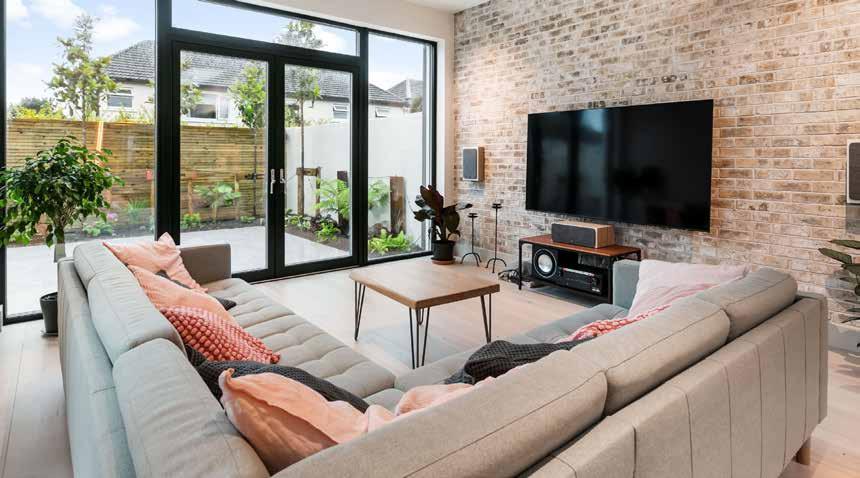
NorDan’s Entrance Doors have been designed with durability and energy efficiency at the core. With contemporary and traditional designs available, there is a perfect match available for your perfect welcome home.




‘Shift coming’ in planning regulations to ‘facilitate people building homes on their own land’, according to ROI government.
Self-builders who have been locked out of building on their own land may finally see change, but many are asking when and how the Government’s promised “shift” will actually happen.
Speaking in Cork at the Fianna Fáil think-in, Taoiseach Micheál Martin confirmed that a review of planning guidelines is underway, two decades in the making, to make it easier for people to build homes on their own land.
“There is a shift coming on that,” Martin said. “There’s a review of the guidelines and given the cost of housing and so forth, and also given the advances in terms of wastewater treatment, which is now much more effective than it would have been in an earlier era, we are looking at how to facilitate people building homes on their own land, in particular,” he said.
Martin also said local authorities may be directed to rezone land near towns and villages, a move he argued would help bring serviced sites “into play”.
“We have to look at everything in respect to housing, because the costs for young people are exorbitant,” he said.
It would mark a break from previous policies under the last government, including the Green Party, which opposed large scale one-off rural housing.
TDs at the think-in, especially those from rural areas, reportedly raised concerns about the challenges their constituents face in obtaining planning permission to build on land they or their families own.
However, even if planning becomes easier, affordability remains a challenge.

Self-builders are pushing for the reinstatement of the development levy waiver to reduce the financial burden of going it alone. Martin acknowledged the scale of the challenge, accepting that Ireland needs 50,000 to 60,000 new homes per year, nearly double the current output, to keep up with population growth of almost 100,000 people annually.
Planning regulations should be relaxed to allow farmers’ children to build their home on the family farm, says the majority of ROI adults (83 per cent) polled by the Farming Independent/ Ireland Think. Only 9 per cent of those surveyed were against the idea.
Ireland’s rural planning guidelines haven’t been updated since 2005 despite repeated government promises that they would be (see main story).
Independent TD for Offaly Carol Nolan described the delay as entering “the realm of the absurd”, reports The Herald.
It is now taking eight times the average income to buy an average priced home, the highest level seen since 2009, according to a quarterly report from the property website myhome.ie. Because less people are able to afford buying a house, property prices aren’t rising as much as they used to.
Bank of Ireland economist Conall Mac Coille shows in the report that the average salary is close to €53k while the average household purchase price for a residential property is now €426k.
The report found that competitiveness for homes remains high. Outside Dublin, asking prices have seen a rise of 6.2 per cent compared with a 4.8 per cent rise in the capital.
As for new house completions, the report for Q2 stated that expiring waivers on local authority development levies and Irish Water infrastructure charges “led to a rush of commencement notices in 2024”.
In Q3, there has been a steady rise in house completions mostly led by apartments but single dwelling completions also grew.
Make the greener choice for your home, upgrade your existing central heating with an eco-friendly, low noise Midea Heat Pump. Air source heat pumps are the low-carbon future of home heating which integrates heating and domestic hot water into one system.
The future of heating, renewable energy is the greener, cleaner way to heat your home. Midea’s air source heat pumps are the costeffective way to lower your energy bills and switch to a low-carbon way of heating your home. Make yourself at home and start saving with Midea Heat Pumps.

OUR MIDEA MONOBLOC HEAT PUMP COMES WITH A MARKET LEADING 10 YEAR WARRANTY.


Councils in Ireland struggle to deliver serviced sites in 2025, falling short of government targets.
Selfbuild’s latest survey of all 31 local authorities reveals that no serviced sites are currently for sale in the 12 responding councils, with many not due until late 2025 or 2026, despite government targets under the Ready to Build scheme.
The Ready to Build scheme aims to make serviced sites, i.e. sites with utility connections and road access already in place, available for people to build their own one-off homes. Sites are to be sold at a discount of up to €30,000.
Local authorities say they are struggling to deliver serviced sites, citing a shortage of suitable land, lack of water and wastewater infrastructure and affordability concerns among potential buyers.
Galway County Council confirmed to Selfbuild it is not in a position to deliver any serviced sites at present.
“Sites made available under this scheme must be ‘serviced’ and located within a town or village and have direct access to adequate mains water supply and mains wastewater disposal infrastructure,” a spokesperson told Selfbuild.
“Galway County has limited serviced lands available within our towns and villages, and together with the infrastructure deficits within the County, this is limiting the areas available for development. Galway County Council is currently working towards acquiring additional lands.”
Even councils that have managed to deliver sites report that progress is slow. Tipperary County Council said it first advertised four serviced sites at Boherlahan two years ago:
“Only one was successful in providing a deposit and applying for planning permission, and they are now at legal stage with contracts being drawn up,” a spokesperson told Selfbuild.
“When we re-advertised in May 2025, interest was lower, but the applicants were readier to build. The remaining three sites have now paid deposits and are applying for planning permission.”
No new sites are scheduled to be
advertised in Tipperary for now.
The fund originally had a target of 2,000 grants and serviced sites combined, which was increased to 4,000 in November 2023.
As part of this overall target, the Ready to Build Scheme asks each local authority to make three to 10 fully serviced sites available in at least three locations every year.
So far, 2,856 vacant property grants have been issued and just 32 serviced sites have been made available, leaving a shortfall of 1,112 grants/sites still to be delivered by the end of this year to meet the government’s target.
A spokesperson for the Department of Housing told Selfbuild it remains confident the target will be met, stating: “It is expected that the target set under the fund will be achieved by end 2025.”
The department added that 100 additional serviced sites are currently at various stages of consideration by local authorities and confirmed that its officials are actively working with councils to progress them.
Clare: Lisdoonvarna and Feakle serviced sites are expected for Q3 2026
Dún Laoghaire-Rathdown: No serviced sites identified
Fingal: No serviced sites identified Galway: Working to acquire land; no serviced sites currently deliverable
Kilkenny: 6 sites in Mooncoin are expected for Q3 2026
Leitrim: No serviced sites identified Louth: Sites under review; release date not available
Meath: No serviced sites currently feasible; land review ongoing
Roscommon: 1 site in Ballyleague, 2 in sites Boyle, 2 in sites Ballinlough are expected for Q4 2025
Sligo: 2 sites in Curry are expected for Q1 ‘26
Tipperary: 4 sites in Boherlahan have the deposits paid, all three remaining buyers now applying for planning
Wexford: No serviced sites identified
Serviced site applications: how it works

This shows the typical eligibility and application process as previously published by Kildare County Council; no Ready to Build serviced sites are currently available in Kildare.
Applicants must:
* Follow Rural Housing Policy: Comply with Kildare County Development Plan 2023–2029.
* Show you can finance the build: Provide bank, financial institution or local authority confirmation of funds or loan approval.
* Be tax compliant: Submit a current Revenue tax clearance certificate.
* Apply for planning within 6 months: Sign a letter committing to lodge planning; notify council when submitted. Extra time may be granted if planning is refused.
* Pay a deposit: 10 per cent of the site price within one month of offer; balance due once planning permission is granted. Deposit refunded if planning not approved.
* Build and move in within 30 months: Complete construction and occupy; unoccupied sites returned to council. Extensions require written approval.
* No mobile homes: Temporary or mobile homes are not allowed on the site during construction.
* Clawback requirement: Applicants must live in the property for at least five years from purchase. If the property is sold or ceases to be your principal private residence within 10 years, you must reimburse the State a portion of the discount received.
The Vacant Homes Officer in your local authority is your point of contact; they can help with the application and let you know what sites are available.
Budget 2026 doesn’t yield anything new for self-builders, but Help to Buy, the First Home Scheme as well as home adaptation and energy grants survive.
The good news from ROI’s Budget 2026 is that the Help to Buy, which sees deposits for mortgages funded by taxes paid over the past four years, and the First Home Scheme, which sees the state take a stake in your build at low cost, remain intact. As do the home improvement grants.
There are, however, no new support specifically for self-builders or individual homeowners. Self-builders were hoping for an extension of the development levy waiver which saved them thousands on their build by being reimbursed for their water and sewage connection charges and by having their local authority development levies waived.
The main new takeaway from the Budget is that Housing Adaptation Grants will continue. Minister Chambers confirmed €130 million will be available next year to fund up to 17,000 grants for older people and those with disabilities.
These grants – run by local authorities – cover essential works such as installing stairlifts, converting bathrooms or creating ground-floor living spaces.
This follows last year’s increase in income thresholds and maximum grant amounts, which remain in place for 2026. Chambers also confirmed that €558 million from carbon tax revenues will continue to fund residential and community energyupgrade schemes through the Sustainable Energy Authority of Ireland (SEAI). No new incentives were introduced, but this allocation means that existing SEAI grants –for insulation, heat pumps, solar PV and other retrofit

measures – will stay available throughout 2026.
Minister Donohoe said Ireland now has “140,000 households generating solar energy” and confirmed that the income tax exemption for selling surplus solar power back to the grid will remain until 2028.
The Government is also funding new training centres for retrofit skills, aiming to expand the workforce needed for energy-efficient construction and renovation.
A total of €1.4 billion has been allocated to Uisce Éireann for water and wastewater infrastructure. While this funding is aimed at supporting overall housing delivery, improved capacity could ease connection bottlenecks that often delay one-off builds in rural areas.
Chambers said a detailed
action plan will soon address “barriers to delivery” in housing. This includes further planning and regulatory reforms to simplify and speed up the consent process. Details are still to come, but any move toward faster, more predictable planning decisions would be a major boost to self-builders and home improvers.
The Living City Initiative, which gives tax relief for doing up or converting older buildings in certain regeneration zones, has been extended until 2030. The scheme now covers homes built before 1975 (it used to apply only to those built before 1915) and will soon expand to include Athlone, Drogheda, Dundalk, Letterkenny and Sligo.
For anyone renovating or restoring an older home in one of these areas, the change could help make projects that bit more affordable.
Minister Donohoe also announced plans for a new Derelict Property Tax, which will replace the current Derelict Sites Levy. A national register of derelict properties is due in 2027, with the tax coming into effect shortly after.
The aim is to encourage owners to bring vacant or rundown properties back into use, which could, in turn, free up more sites for renovation or self-build projects.
So aside from the existing grants for home adaptations and energy upgrades, Budget 2026 didn’t bring anything new for self-builders. There were no changes to the Help to Buy or First Home schemes, no VAT breaks for one-off builds, and no new financial supports for people building on their own sites.
Budget 2026 pledges record funding for home energy upgrades after calls for fairer, more accessible solar and retrofit supports.
Following calls from the Climate Change Advisory Council for stronger and fairer solar and retrofit supports, Budget 2026 delivered record funding for home energy upgrades with a focus on affordability and inclusion.
Minister for Climate, Energy and the Environment Darragh O’Brien announced that his Department has secured almost €1.1 billion “to accelerate Ireland’s energy transition and underpin our journey to a net-zero future.” Of this, a record €558 million will go to the Sustainable Energy Authority of Ireland (SEAI) for residential and community energy upgrades, an €89 million increase on last year.
“This means that more funding than ever will be available to make homes warmer, healthier, more comfortable and less expensive to heat,” the Minister said. He added that the allocation will be supplemented through the European Regional Development Fund to expand the Warmer Homes Scheme next year.
The budget also continues support for the Home Energy Upgrade Loan Scheme, offering low-cost retrofit loans with interest rates from 3 per cent.
The announcement follows the latest report from the Joint Committee on Climate, Environment and Energy which urged government to make access to retrofit and solar supports fairer.
The report stated that Ireland is falling behind on renewable wind and solar energy targets. To speed things up, it said that supportive policies must be applied properly.
The committee also recommended that homes with solid fuel should get better supports to switch to renewables.
“Retrofitting measures are reformed to introduce increased resourcing and more targeted measures so that low and middle-income households unable to access or afford retrofits under the current government programme can participate,” reads the report.
“The Committee recommends the
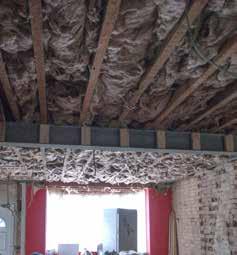
introduction of tiered, area-based schemes including more specific targeting of and supports for lower-income and solid fuel homes.”
In a series of debates of the Joint Committee on Climate, Environment and Energy climate TDs heard from expert witnesses who stated that renewable electricity, such as solar PV, is the “backbone of the transition” to Net Zero.
With solar cited as one of Ireland’s most scalable and cost-effective ways to cut energy use and household bills.
Speaking after the Budget 2026 announcement, Minister O’Brien said he “welcomes a very substantial allocation for home energy upgrades,” adding that fully funded schemes such as Warmer Homes can help households save “between €750 and €1,120 per year” through deep retrofit measures. He also confirmed that the €400 income tax exemption on profits from home microgeneration has been extended to 2028, benefiting more than 150,000 households and businesses already registered with ESB Networks.
With record funding now in place and cross-party calls for more inclusive supports, the focus will turn to how this money is allocated.
CIOB says VAT incentivises ‘demolish and rebuild’ policies
The Chartered Institute of Building (CIOB) has criticised Ireland’s current VAT structure for encouraging demolition and rebuild projects over more sustainable renovation and retrofit practices, undermining the country’s climate goals under the Climate Act.
In a budget submission, the CIOB warned that the 13.5 per cent VAT rate applied equally to both demolition/rebuild and retrofit works. This fails to reflect the urgent need to reduce embodied carbon emissions in the construction sector.
“This VAT structure is facilitating a culture of demolish and rebuild, rather than add, transform and reuse,” the CIOB said, noting that current tax incentives are not aligned with climate targets.
“We’re missing a key opportunity to drive sustainable construction practices through the tax system.”
The Institute is calling on the Government to introduce targeted VAT reform that would disincentivise demolition—a carbon-intensive activity— and instead promote reuse and retrofit, which can significantly reduce the environmental footprint of building projects.
In addition to VAT reform, the CIOB has also come out against any further extension of the Help to Buy scheme. The organisation argues that such demandside interventions, especially during a time of limited housing supply, serve only to inflate house prices without tackling the root causes of the housing crisis.
“Help to Buy does nothing to address a dysfunctional land market,” the CIOB said. “Developers are forced to pay inflated prices for land, which leads to cost-cutting on quality, design and tenure later in the building process.”
Instead, the CIOB is urging the Government to redirect its policy focus upstream, towards the land acquisition and development stage, where it believes intervention could yield more meaningful, long-term benefits for housing affordability and quality.
Stakeholders highlight dangers of allowing garden cabins and modular units to be built in back gardens in ROI.
Back garden cabins, modular units and extensions could soon be easier to add to ROI homes, both in attics and back gardens, as the ROI government carries out the first major review of exempted development rules in more than two decades.
The proposed changes to Exempted Development regulations, the rules that determine which works can be carried out without planning permission, recently underwent a public consultation.
According to Minister for Housing James Browne, the move will reduce pressure on local authority planners, allowing them to focus on larger-scale housing projects: “Being able to easily and simply adapt dwellings to meet changing needs could have a significant impact on people’s lives.”
The consultation was carried out as part of the implementation of the Planning and Development Act 2024, with updated regulations expected later this year following a review of public feedback.
Minister of State for Planning
John Cummins said the proposed exemptions represent “common sense” measures that could simplify housing delivery and reduce delays in the planning system.
Minister of State for Older People Kieran O’Donnell also highlighted the importance of enabling older adults to remain in familiar homes and communities through flexible adaptations.
The draft regulations aim to expand the list of exempted developments, meaning you could soon avoid the time and cost of a full planning application to carry out certain small-scale projects.
Key proposals under review include:
- Attic conversions, including rooflights
- Heat pump installations
- Subdivision of existing dwellings, to support multigenerational living and ‘ageing in place’
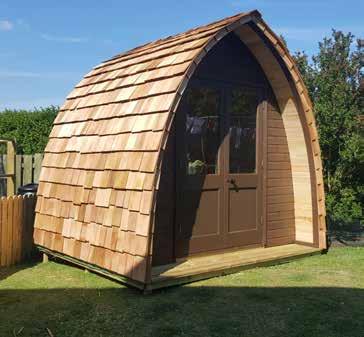
- Detached habitable garden buildings, including modular homes for relatives or carers
The public consultation on the proposals drew 922 submissions in just four weeks, showing the scale of public interest.
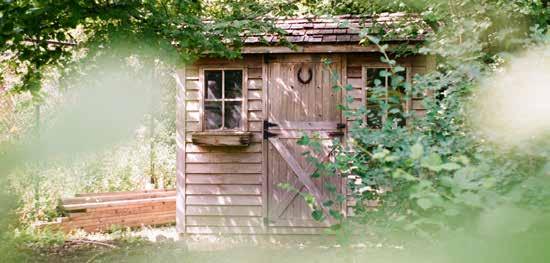
For homeowners, the changes could mean new freedoms to build projects of up to 45sqm without applying for planning permission.
Ministers say the shakeup would cut red tape and let people get on with small-scale improvements more quickly, while freeing local councils to focus on major housing schemes. Housing Minister James Browne called the strong response proof that “proper planning is central to sustainable development.”
However, planners and housing charities are sounding notes of caution. The Irish Planning Institute (IPI) has said it opposes exempting detached residential units in back gardens altogether, warning of “significant unintended consequences”. These include overloading
water and wastewater services, increasing flood risk by paving over gardens and driving up land prices as plots with space for backyard units become more valuable. “Government policy should be seeking to ameliorate housing costs and promoting affordable housing,” the IPI said in its submission.
Another major issue is enforcement. The Department of Housing has said any new units would be intended only for family members and classed as part of the main residence, not for rental.
But according to the Dublin
Inquirer, Green Party councillor Ray Cunningham warned that planning authorities currently lack the powers to monitor or prevent backyard sheds being rented out.
Inspectors often need a court order to access properties, he said, with two weeks’ notice giving owners time to clear out tenants. This, he argued, undermines the idea that new garden homes could be limited to family use only.
Meanwhile, housing charities Threshold and ALONE raised concerns about the impact of exempting
detached habitable accommodation, such as garden cabins or modular units.
Threshold raised the risk that such units, if rented out, could bypass minimum standards unless brought under the Residential Tenancies Act.
ALONE highlighted the need to protect older people from financial pressure or coercion to build or subdivide on their properties, recommending that safeguards and independent advice be built into the process.
Both Threshold and the IPI have urged the government to set clear safeguards if it
A Wicklow family’s battle to keep the log cabin they’ve called home for six years shows the risks of relying on unauthorised temporary accommodation – and hoping to get it approved after the fact.
According to the Irish Independent, Isabella and Brendan Carey were granted permission in 2021 to build a farmhouse on their farm land in Aughrim. The permission from Wicklow County Council planning office came with a clear condition: the existing log cabin had to be removed before construction could begin on site.
Their architect, Pat O’Connor of Ashford Property Services, said in a recent planning appeal that construction of the new farmhouse has not yet started because of “financial constraints” but that the family is actively seeking funding and hopes to break ground soon.
The log cabin – measuring 68sqm with four bedrooms, a living/kitchen space and one bathroom – has been home to the Careys and their children since 2019. All the children attend local schools, and – as Mr O’Connor argued in a previous application – the log cabin provides necessary on-site accommodation for farming the 160-acre holding.
“This can’t be done from a nice semidetached [house] in Aughrim village,” he wrote, describing the council’s condition to remove the cabin before building as “unjust.”
In April this year, the Careys sought shortterm retention of the structure and a septic tank
on their land at The Trees, Mongnacool Lower, Aughrim.
However, Wicklow County Council refused, saying that allowing the cabin to stay would amount to “consolidation of unauthorised development” and breach the 2021 planning conditions. It also argued that the cabin “would be contrary to the established housing standards of the Department of the Environment, that deems such accommodation as being unfit for human occupation.”
The family has now lodged an appeal with An Coimisiún Pleanála, with a decision due by November 5.
There could be some relief on the way for future small log cabin projects. The government is considering raising the exemption size for garden cabins and modular homes from 25sqm to 45sqm, allowing some smaller structures to be built without planning permission – though still well below the size of the Careys’ log cabin.
More than 900 submissions were received in a public consultation earlier this year looking at a major overhaul of the planning exemption rules. The Department of Housing saying the response was “predominantly supportive.” Any change, however, will require sign-off by both Houses of the Oireachtas before it becomes law.
moves forward with the new exemption regulations.
Suggestions include a minimum floor space of 32 sqm (the same as a studio apartment), banning short-term lets and requiring a professional to certify compliance with building and wastewater standards.
The Department of Housing is now reviewing the 922 submissions received. Draft regulations will be finalised and presented to the Oireachtas in the coming months.
Planning permission rules in ROI for building in the back garden depends on size, location and use.
Size matters:
The current exemption is 25sqm or under – anything bigger generally needs permission. The proposed change could raise this to 45sqm, (see main story).
Living in it = planning needed:
Even under 25sqm, you need permission if it’s used as a dwelling.
Structures within 10m of the main house, or closer to a public road than the main house, typically require permission.
Pre-planning is your friend:
Book a pre-planning consultation with your local authority to check your plans before you submit.
Appeals are possible: If refused, you can appeal to An Coimisiún Pleanála or revise your application.
If you’re planning a new build or major home improvement project, now’s the time to get moving but be ready for some competition.
NI’s construction sector is booming, with workloads at their highest in years. That’s great news for the economy and proof that demand for new homes is strong. But it also means anyone planning a renovation, extension or new build should book trades early, budget carefully and allow for longer lead times.
The latest State of Trade Survey from the Federation of Master Builders (FMB) and the Chartered Institute of Building (CIOB) shows workloads up by a net balance of +36 per cent in the first half of 2025, with house building (+68 per cent) and repair, maintenance and improvement (+55 per cent) leading the way. Enquiries soared even higher (+64 per cent), proving that construction projects – including self-builds, renovations and extensions –are in demand.
Builders are responding by hiring: 64 per cent of firms have expanded their workforce, which should help ease some of the pressure. Still, competition for skilled trades is fierce, so you may face longer waits for specialist contractors.
Even with extra staff, 77 per cent of firms said a lack of skilled tradespeople had affected their work, causing delays (50 per cent) and even cancellations (39 per cent). The hardest roles to fill include plumbers and HVAC specialists (54 per cent), painters and decorators (46 per cent) and general labourers (45 per cent).
This is especially important for anyone planning a highperformance or low-energy home. 79 per cent of firms struggled to hire workers familiar with the new building safety regime, 71 per cent with

-
modern technologies, and 64 per cent with sustainable building practices. These gaps could add time or complexity to your project if you can’t get the right expertise when you need it.
With demand high, prices are rising: 66 per cent of firms surveyed have increased their charges, while wages and material costs are pushing overall budgets up. Among those most affected, 51 per cent have restricted recruitment, 49 per cent made redundancies, and 45per cent say their business viability is at risk –meaning fewer options for builders to choose from.
Delays are also a risk, with firms reporting setbacks from changing project parameters (46 per cent), regulations (46 per cent, material shortages (41 per cent) and planning issues (39 per cent).
On the planning side, the latest Northern Ireland Planning Statistics (Q1 2025/26) show that two-thirds of applications (1,601 of 2,416)
were residential. Approval rates are high with 94.5 per cent of local/residential applications approved.
Processing times vary but are worth being aware of for scheduling your build. Local applications averaged 19.8 weeks, slightly above the 15week target. There were 7,476 live applications at the end of June 2025, with 32 per cent over a year old, so early submission is key to try and avoid delays. Council performance varies too, from seven weeks in Mid & East Antrim to 13.6 weeks in Belfast for local applications.
Despite these challenges, there’s plenty of reason to be upbeat: 73 per cent of Northern Irish firms are optimistic about the next two quarters, the highest confidence levels in the UK.
Gavin McGuire, Northern Ireland Director at the FMB, said: “It’s always encouraging to hear positive feedback from the industry, and the latest State of Trade Survey gives us reason to be optimistic. In Northern
Ireland, workloads have risen by 36 per cent and enquiries by 64 per cent which are some of the strongest figures we’ve seen in years.”
“These are clear signs of recovery, particularly in the repair and maintenance market, and we’ll be watching closely to see if this momentum continues through the rest of 2025.”
He added: “But with this growth comes pressure. Builders are still struggling to find skilled workers, especially those with knowledge of new building safety rules and sustainable construction methods. These shortages are already causing delays and even cancellations.”
“If we want to turn this recovery into lasting progress, we need real investment in training and support for SMEs who are working hard to upskill their teams and bring new talent into the industry. Overall, our optimism is not diminished and is always buoyed by the resilience of our industry, and the FMB members who provide outstanding examples of quality work and service.”

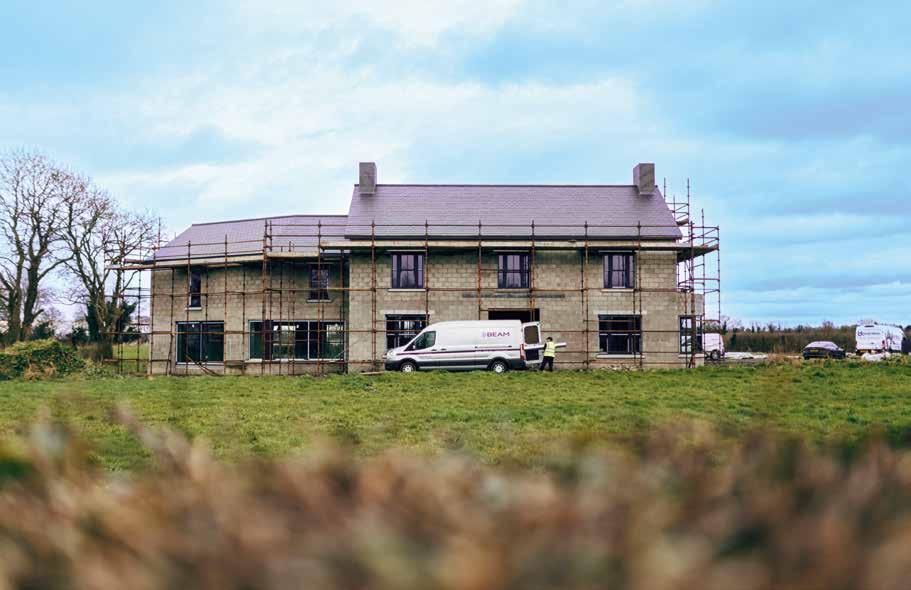

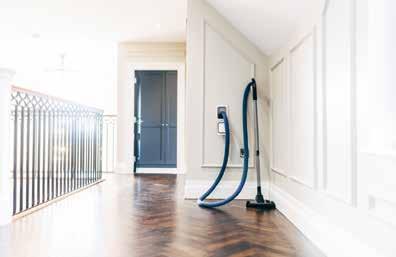
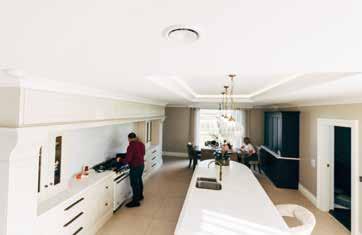




After paying £20,000 for a two-storey extension, a Belfast family was forced to spend £71,500 more to have the work completed by another builder.
A Belfast builder has been fined and given a suspended prison sentence after failing to complete a two-storey extension, despite being paid £20,000 by the householder
Martin Spence (57), of Pretoria Street in Belfast, was sentenced at Newtownards Magistrates’ Court this week following a case brought by the Trading Standards Service. He pleaded guilty to one charge under the Fraud Act 2006 and one under the Consumer Protection from Unfair Trading Regulations
2008. He received a threemonth prison sentence, suspended for two years and was fined £500. He was also ordered to pay £5,000 in compensation to the victim.
The court heard that Spence provided a quote of £53,000 plus VAT in May 2022 for the extension work, which the householder accepted. A contract was drawn up with a schedule of stage payments, and work began on June 21, after a £10,000 deposit was paid.
The second stage payment
of £10,000 was due once the foundations were laid, the brickwork was up to the first floor and the pipe work for the bathroom was in. However, on October 19, 2022, Spence advised the householder in a text message that a second payment of £10,000 was due when not all of the scheduled work was complete, e.g. the brickwork to the first floor was not done.
Once the second stage payment was made there was little further work done. From that point on Spence made
numerous promises in text messages to progress the work, up until January 25, 2023, when he messaged the householder to unilaterally terminate the contract.
The householder later hired another builder to complete the work at a cost of £71,500, in addition to extra material costs that should have been covered under the original agreement. The court was told the ordeal had a negative impact on the family’s health and finances.
Those availing of grants through a One Stop Shop will gain a better understanding of exactly who is responsible for what, so as to reduce confusion, delays and scope creep.
If you’re planning to retrofit your home or include energy upgrades in a renovation, new guidance from the Royal Institute of the Architects of Ireland (RIAI) and the Sustainable Energy Authority of Ireland (SEAI) could make the process much smoother.
Launched at the RIAI Conference 2025, the One Stop Shop Pathways Guidance is designed to help homeowners better navigate the complex world of home energy upgrades, especially when working with a SEAI-registered One Stop Shop (OSS).
A One Stop Shop is an SEAI-approved provider that
manages every stage of your home energy upgrade, from initial assessment and grant application to the final works and Building Energy Rating (BER). They’re intended to take the hassle out of retrofitting by acting as a single point of contact for the homeowner.
While these services are designed to simplify retrofits, homeowners often find it unclear how OSS providers fit into renovation or extension projects, particularly when an architect or main contractor is already involved.
That’s where the new guidance comes in.
The RIAI-SEAI guidance outlines two main pathways for homeowners undertaking energy upgrades:
Pathway 1: The One Stop Shop acts as the main contractor, taking responsibility for the entire energy upgrade process.
Pathway 2: The One Stop Shop acts as a subcontractor, focusing only on the energy upgrade while your main builder or architect oversees the broader project (like an extension or full renovation).
The guidance provides greater clarity around roles and responsibilities,
helping to avoid confusion or miscommunication between designers, contractors and OSS providers. It ensures that energy upgrades are considered early in the design process, improving coordination and reducing the risk of delays or rework later in the project.
It also supports a design-led approach that encourages highquality, well-planned outcomes. By aligning energy upgrades with the RIAI’s standard architectural work stages, the guidance helps ensure that projects are not only technically sound but also aesthetically and functionally integrated into the home.
The perfect starting point for reimagining your space, Joe Fallon Design’s Beyond the Back Garden: 31 Home Extension Design Inspirations is a beautifully curated guide aimed at helping homeowners unlock the hidden potential of the homes they live in.
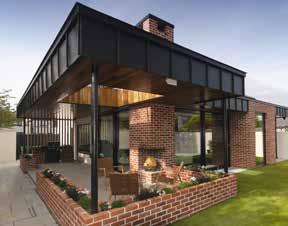
Drawn from Joe Fallon Design’s extensive project portfolio, the book offers readers a visual feast of modern architectural ideas, from single storey extensions and luxury outdoor living spaces to dramatic interiors and clever spatial transformations.
It’s a book that clearly, and concisely, explains design concepts with photos
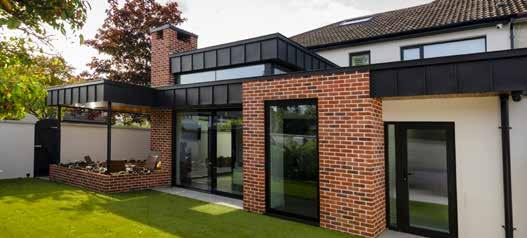
of real-life examples to drive the ideas home. Plus the proceeds are going to a good cause, to Our Lady’s Hospice & Care Services, Harold’s Cross and Blackrock.
“We believe in house transformations driven by a genuine desire to understand your aspirations and realise them within the fabric of your home and lifestyle,” says Joe Fallon, the founder and creative force behind the design studio.
Known for his signature style of drawing light into previously dark, unused areas, Joe Fallon brings a fresh perspective to home design, blending aesthetic sophistication with energy efficiency and thoughtful layout planning. Beyond the Back Garden brings that vision to life, with 31 distinctive projects grouped for easy
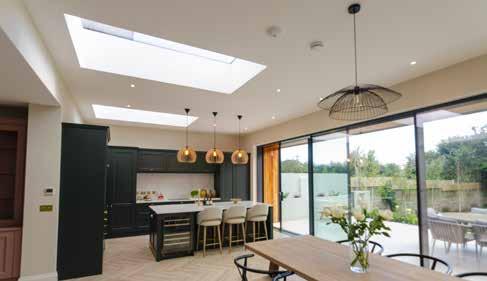
browsing, helping readers imagine what might be possible just beyond their own back doors.
More than just a design showcase, the book serves as a guide to rethinking how space can be used in today’s housing climate. With housing costs rising and space at a premium, Fallon encourages homeowners to look within their own properties to find opportunities for transformation.
“Our mission is simple,” says Fallon. “We want to inspire people to develop their own vision for enhancing their homes. Whether you’re drawn to open-plan living, love the idea of large windows, or dream of a seamless indoor-outdoor flow, we hope this book sparks your imagination.”

Visitor packs are now available for Selfbuild Extend & Renovate Live events, starting with the Ulster show on November 8-9 at the Eikon in Belfast.
We’re in full show season here at Selfbuild which means there’s a show coming near you… so don’t miss out! The Selfbuild Extend & Renovate Live events are your opportunity to meet the experts in person, from home heating to ventilation, insulation to windows and doors, kitchens to bathrooms.
Not sure where to begin? We’ve come up with visitor packs to help you navigate the event and make the most of the knowledge that’s on offer with sample questions to ask, and a list of expert companies to chat to.
Build Costs is where every project starts; you’ll need to figure out how much you have to spend and how much what you want to build will set you back. We’ve experts on hand to help you figure it all out, with a dedicated visitor pack pointing you in the right direction.
The early stages of planning for your build are, of course, just
as crucial and tied in with build costs. This includes designing the house to be as efficient as possible to meet your wants and needs, and obligations, and navigating through the planning permission process.
It’s a team effort, not just within the design team but also with the authorities. The aim is to build homes that are building regulations compliant, kind to the environment, compliant with the planning objectives of the area and built in a safe

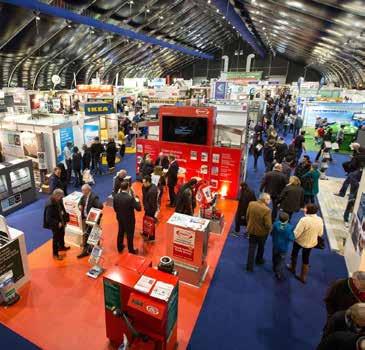

environment. Yep, we’ve got a visitor pack for that too.
The great thing about home improving and house building is that you’re in control, so dive in and enjoy the process. Your ambition might be bold and architectural, understated and practical, small and beautiful. Whatever you’re planning, the key is to make sure it’s suited to you.
However, technical aspects can conspire to make the process seem overwhelming. So we’ve put together a Heating and Ventilation visitor pack to guide you through heat pumps and their alternatives, plus the all important and so often overlooked piece of kit that is the ventilation system.
We’ve also a visitor pack
dedicated to the hot topic that is solar power including asking about system sizing and batteries. It’s all about demystifying the process.
So whether you’re building new, renovating or extending, no matter at what stage of the project you’re at, come and chat to the experts at Selfbuild Extend & Renovate Live.
Free tickets are available on live.selfbuild.ie and the next dates after Ulster are 10-11 January 2026 for Munster, at the University of Limerick Sport Centre, and 7-8 February 2026 for Leinster at the National Show Centre in Dublin.
Come prepared and get your hands on your visitor packs on live.selfbuild.ie.
ELK doors has recently opened its showroom in Ballylanders, Co Limerick. Specialising in highquality, bespoke interior doors for new build homes and renovation projects, ELK is now in its second generation of ownership, a fresh rebrand built on decades of experience.
Whether you’re a builder, designer or homeowner, ELK will work closely with you to create doors that fit seamlessly and elevate every space. Thanks to its inhouse manufacturing, you can alter the door design to suit your needs. Bespoke options include variations in sizes, designs, finishes, materials and style.
The result is high-quality, made-to-order doors in the exact style and finish you require, on time, all at a very competitive price.
elkdoors.com
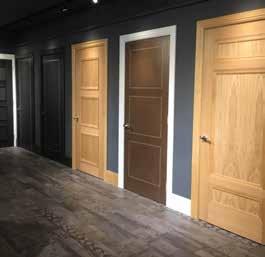
In today’s airtight, energy-conscious homes, ventilation is essential for comfort and health. Galway-based ProAir has answered the call with its latest innovation, the PA700LI, designed for houses up to 270sqm.
Independently tested at the Building Research Establishment (BRE) in England and listed in the Product Characteristics Database (PCDB), it ranks among the most efficient MVHR systems available in Ireland.
The PA700LI achieves up to 95 per cent thermal efficiency, an A+ SEC rating, and offers features such as automatic summer bypass, wireless boost switches and continuous low-speed operation for quiet, economical performance.
Intelligent sensors monitor temperature, humidity and CO2, while the ProAirVENT Connect app gives homeowners full remote control.
Every unit is bespoke designed and installed to Part F 2019 Building Regulations, delivering fresher, healthier and more sustainable living for Irish homes.
proair.ie




SAM Mouldings, the UK and Ireland’s leading manufacturer of MDF mouldings, is set to become Ulster Rugby’s Principal Partner, Official Front of Shirt and Training Partner.

Currently celebrating its 35th anniversary, SAM Mouldings has signed a five-year contract to become Ulster Rugby’s Official Front of Shirt and Training Partner across all Senior Men’s, Women’s, Academy and Age Grade teams.
Founded in 1990 by Sam and Julienne McCrea, SAM Mouldings remains a family-run business today. For 35 years, SAM has been a trusted supplier to the construction and home improvement industries, manufacturing the widest range of high-quality MDF mouldings. These products have been installed in homes, offices, hotels and commercial buildings across the UK, Ireland, Europe and the USA.
Now, SAM Mouldings also offers its products directly to local customers in Northern Ireland through its online store, shop. sammouldings.co.uk
sammouldings.co.uk
Selfbuild Extend & Renovate Live ran a mega competition with Future Renewables and Calor last year – here the lucky winner tells us all about his self-build and installing the £10k+ renewable energy system he won.
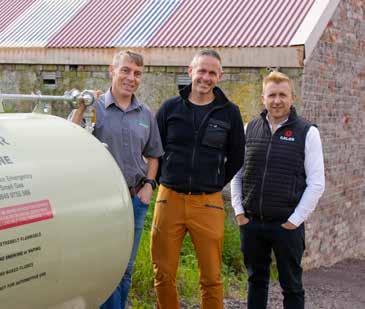
When Brendan McVeigh set out to build his family home in Co Tyrone, energy efficiency was top of the list. His vision took an exciting turn at the Selfbuild Extend & Renovate Live Ulster show last September, when he unexpectedly won the Future Renewables and Calor competition.
The prize, worth over £10,000, included a Duracell Energy solar PV system with battery storage from Future Renewables, alongside a Bosch boiler and Calor gas tank.
Installed during the build, it will deliver comfort, flexibility,
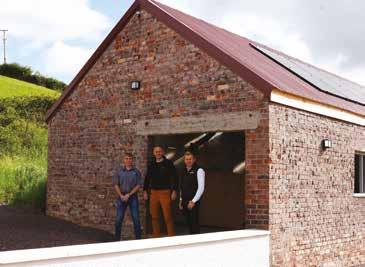
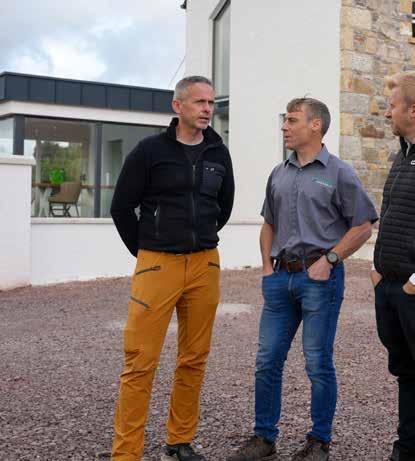
“I was genuinely shocked to win...at the time, we’d only just put in the foundations, so it was a very pleasant surprise.”

and long-term savings.
“I was genuinely shocked to win,” Brendan recalls. “At the time, we’d only just put in the foundations, so it was a very pleasant surprise.”
The new house sits on the footprint of the family’s original farmhouse, close to the historic Parkanaur Estate. Keen to retain
some of the character, Brendan reused much of the stone and slate from the old property. “We wanted to replicate what was there, only this time create the most energy-efficient home we could,” he explains.
A unique aspect of the project was the involvement of Brendan’s daughter, an architecture student who has been hands-on from the outset.
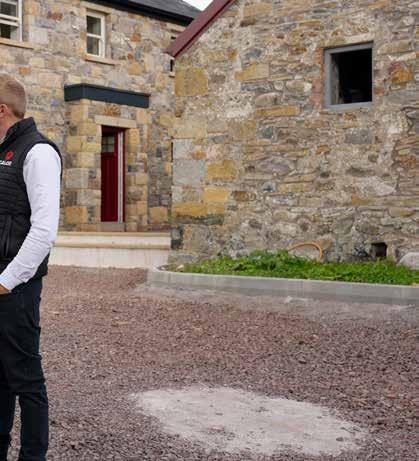
“We would have traditionally used oil and a log stove, but now we have a highly insulated and efficient home.”
Working alongside the lead architect, she influenced key design decisions and gained invaluable experience. “She was keen to reuse as many original materials as possible and even managed tradesmen and the stonemason. It’s been a success for her,” says Brendan proudly.
For Brendan, one of the most rewarding aspects has been watching steady progress week by week, thanks to a builder who managed the day-to-day running of the site. The biggest challenge?
“Definitely the finances and getting to grips with the technology. There has been so much change, you do as much research as you can.”
The solar installation, however, proved straightforward. Panels were mounted on an existing shed, with compact storage for the batteries and inverters. “It was a very simple, neat install, I
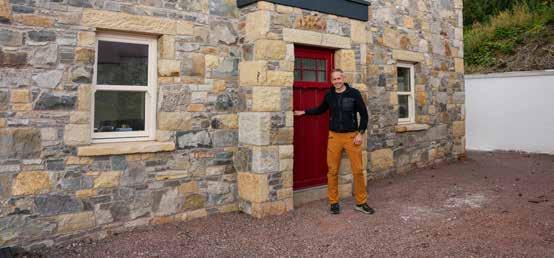
can see how it could work for so many homes,” Brendan notes.
The combination of solar and gas has also been a success and complement each other perfectly. The solar panels will generate around 4,500kWh per year, which, combined with smart battery storage, will cover about three quarters of the family’s electricity usage.
“The Calor Gas gives us reliable heating and quick response times, while solar significantly cuts cost and provides renewable energy. To have that in a rural home is something to look forward to.”
Reflecting on the process, Brendan offers advice: “I’d say to anyone considering renewables or mixed energy, don’t be afraid. The technology is proven, and it should be the standard for future homes.”
“We would have traditionally used oil and a log stove, but now we have a highly insulated and efficient home. We’ve picked the right technologies, and I’m feeling positive going forward.”
futurerenewables.net calor.ie
l Duracell Energy Dura-I inverter 3.6K
l Duracell Energy Dura5: 5.12kWh battery
l 12 x Trina 435W solar panels
l Duracell Energy monitoring app
l Worcester Bosch Greenstar 8000 35kW combi boiler
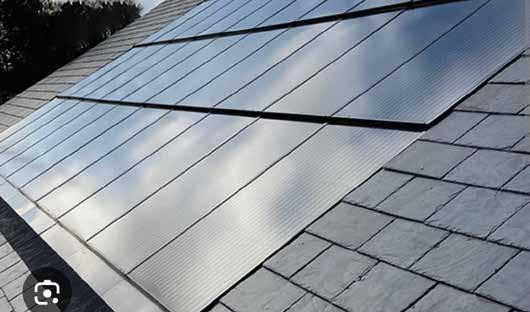





Say goodbye to bulky solar panels. The PV InDaX Adapt system is designed to integrate seamlessly into your roof, sitting flush with your tiles for a clean, modern finish. No compromises – just maximum energy yield and stunning aesthetics.
Low-profile, black aluminium framing
High performance crystalline technology
Fast, safe installation
Weathertight & wind-resistant
MCS & BBA certified 25-year power output guarantee Make your roof work harder – without ruining the view. Discover PV InDaX Adapt today.
Belfast: +44 28 9038 0060
Omagh: +44 28 8224 6220
Dublin: +353 1 623 4541
Limerick: +353 61 531 381
Cork: +353 21 432 1868
www.sig.ie enquiries@sig.ie

